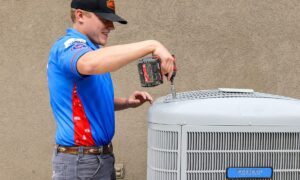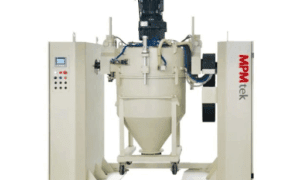Rising energy costs, whirring compressors, and sweltering afternoons call for attention even on the busiest of days. Odd sounds, frozen coils, or a leaky drain pan may reverse household comfort. Although basic filter replacements seem reasonable, more complex issues hide behind metal panels. Weighing fast solutions vs. expert service calls helps maintain peace of mind and cool airflow.
Recognizing Quick Tune-Ups That Stay Within Safe Boundaries
Most weekend tool packages will fit the simple chore of changing a clogged air filter or removing trash from outside coils. Almost immediately, swapping filters enhances airflow efficiency, therefore relieving pressure on the compressor and increasing its service life. Clearing grass clippings, twigs, or leaves from condenser fins preserves the best heat exchange. Simple shims help to level a slanted outdoor unit, thereby avoiding refrigerant flow problems. Loose electrical connections tightened at the disconnect box help to prevent sparks. These rapid tune-ups improve performance without involving anyone in sophisticated refrigerant systems or high-voltage components. Frequent rubber drain line inspections and moderate vinegar solution cleaning help prevent small obstructions causing condensate spills. Following these easy maintenance guidelines avoids expensive repairs and helps to preserve system health.
Assessing Health Hazards and Electrical Dangers Hidden in AC Units
Dealing with refrigerant lines or accessing internal circuitry reveals hidden hazards that need careful handling. High-pressure refrigerant gas can inflict burns on touch that resemble frostbite; breathing some refrigerants can induce respiratory problems. Air handlers’ electrical components may run at 240 volts or more; even a momentary gap in concentration might cause shocks. Long after the power is off, corroded capacitors hold deadly charges. Rusty mounting brackets and rusted copper tubing compromise structural integrity and pose the danger of unexpected unit collapse during repair. Understanding these risks involves realizing that certificates for technicians are earned throughout the lifetime of training. Professional technicians arrive ready to properly control these threats, armed with refrigerant recovery devices, leak detectors, and insulated gloves. Calling on knowledgeable hands for anything beyond simple maintenance guarantees property and health protection.
Gathering Proper Equipment and Skills to Tackle Minor Repairs
When facing minor AC problems, investing in the correct instruments or getting AC repair service becomes very vital. While a refrigerant recharge hose kit permits safe top-ups using appropriate mineral oil mixes, a small manifold gauge set checks refrigerant pressures precisely. Before the sealed system operation, vacuum pumps dry the lines of moisture. Flare tool sets provide leak-tight connections free from kinks, compromising performance. Compressor bearings are kept functioning smoothly by lubrication injectors. Service wrenches and nut drivers fit for HVAC fasteners help to avoid stripped heads. Mastery of brazing procedures and pressure measurements takes hours of work, even armed with these tools. Industry qualifications and on-the-job training help technicians hone these abilities. Trying sealed-system repairs without prior knowledge usually results in either irreparable damage or refrigerant escape. Setting aside difficult repairs for qualified experts guarantees lifespan and effectiveness.
Crunching Numbers: Comparing Upfront Savings with Long-Term Costs
Changing a condenser fan motor or thermostat comes with an enticing price tag that do-it-yourselfers typically consider to be pure savings. When parts costs are compared to an hourly rate, one might find possible break-even points in weeks, should the repair go without incident. Including warranty voids or danger of poor installations shifts the balance toward expert advice. Unexpectedly high final expenditures might result from hidden costs, including refrigerant disposal fees and specialist leakage seals. One misdiagnosed problem might cause repeated visits to the hardware store or emergency service calls, therefore negating any early savings. On the other hand, field experience and diagnostic instruments of a professional simplify repairs into one visit. Objectively comparing these situations lets one decide if the advantages of a sure repair on the first try exceed the sacrifice of a weekend for partial savings.
Respecting Warranty Terms and Manufacturer Safety Protocols
Homeowners making new AC system investments rely on manufacturer warranties to cover significant component failures. Often, these warranties are completely voided, opening sealed refrigerant connections or changing compressor components without OEM-approved methods. Carrier, Trane, and Goodman instructions outline permitted user maintenance, usually restricted to coil cleaning and filter changes. Ignoring these guidelines puts equipment at risk for wrong torque settings, unsuitable refrigerant combinations, or unauthorized lubricants. Manufacturers want documentation of qualified expert interventions and enforce warranty claims using comprehensive service records. Following these rules guarantees that replacement components satisfy high safety criteria and maintain coverage. Ignoring them runs the danger of leaving a sizable repair fee for a compressor serviced by an authorized technician protected under an active warranty left unpaid.
Conclusion
Combining professional knowledge with do-it-yourself enthusiasm maintains cooling systems year-round that are dependable, safe, and efficient. While more complex repairs call for expert hands, simple maintenance chores relieve the load on professionals. Selecting carefully between professional services and temporary solutions helps to maintain home comfort and equipment lifetime. Every decision is guided by clear knowledge of hazards, expenses, and guarantees, ensuring consistent, reliable, cool air flow season after season.



































